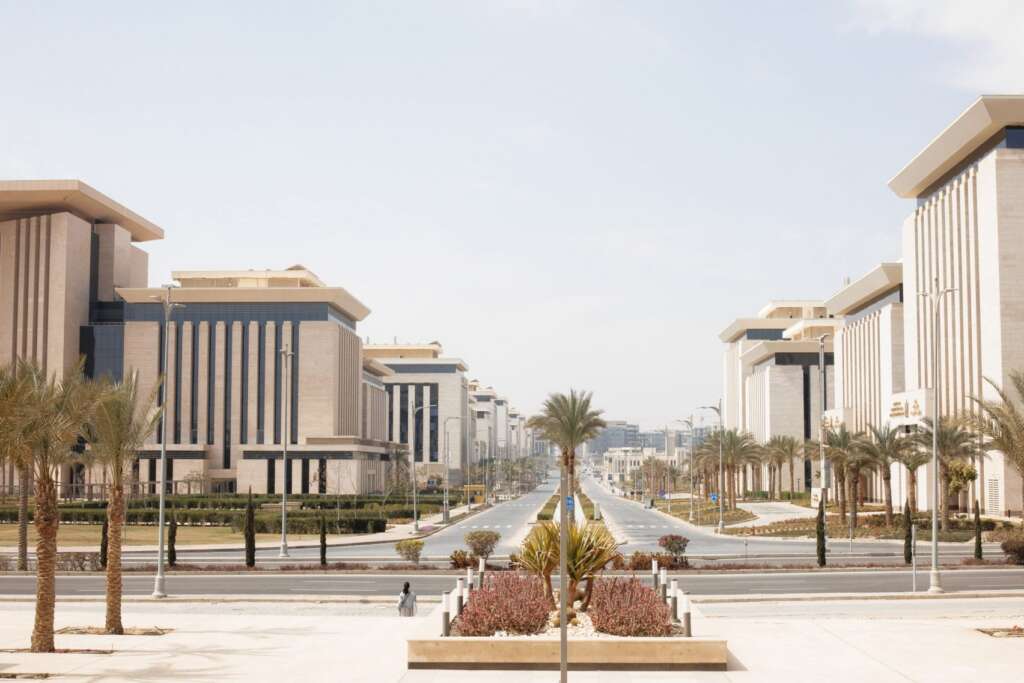Share This Article
Just 45 km east of Cairo, Egypt is building something extraordinary—a brand-new capital city from the ground up. Known simply as the New Administrative Capital, this massive urban development is more than just an infrastructure project. It’s a bold national vision to reimagine urban life for over six million residents and to relieve pressure from Cairo’s ever-growing population.
A Bold Urban Vision
Spread across over 700 square kilometers, the New Administrative Capital (NAC) is one of the world’s most ambitious city-building projects. Planned to be Egypt’s new administrative and financial center, it’s designed with smart technologies, sustainable planning principles, and a futuristic mindset.
At its core, NAC is not just about moving government buildings. It’s about creating an entirely new urban ecosystem—one that’s green, efficient, and equipped for the future.

Key Features of the New Capital
The Iconic Tower:
At 385 meters tall, this is set to become Africa’s tallest skyscraper. Located in the Central Business District, it reflects Egypt’s desire to be a regional financial powerhouse.
The Grand Mosque of Egypt:
With the capacity to host over 100,000 worshippers, this is one of the largest mosques in the world. It symbolizes spiritual unity and architectural grandeur.
The Government District:
Designed to house ministries, the presidential palace, and key administrative bodies, this zone reflects the country’s shift toward centralized efficiency. Think of it as Egypt’s version of Washington D.C.—but smart.
The Green River:
Perhaps the most visually striking feature, the Green River is a 35 km-long urban park inspired by the Nile. Designed to weave through the city like a green spine, it includes public gardens, pedestrian zones, and leisure spaces.
Residential Districts:
The city is divided into smartly planned zones for housing, with schools, hospitals, and retail woven into walkable communities. These areas are supported by new-age infrastructure including solar power, underground utilities, and digital connectivity.
Multimodal Connectivity:
From high-speed rail lines and monorails to expansive road networks and ring roads, the new capital aims to offer seamless mobility. It will connect to Cairo and other cities efficiently, reducing dependence on cars and traffic congestion.
A Smart and Sustainable City
The NAC is designed as a smart city, integrating digital services for governance, utilities, transportation, and even citizen engagement. Everything—from street lighting to waste collection—is being built with automation and IoT capabilities.
Energy efficiency and water conservation are integral. Solar panels are being installed across public buildings, and green building codes are enforced to minimize environmental impact.
Why This Project Matters
Egypt’s New Administrative Capital isn’t just about iconic buildings or political symbolism. It represents a new approach to city-making in the Global South. As countries grapple with urban overcrowding, climate change, and economic development, projects like NAC offer a glimpse into how technology and planning can be used to design cities for tomorrow.
For architects, planners, and urban thinkers, NAC is a case study in ambition, scale, and experimentation. It challenges the traditional notion that cities grow only over time. Instead, it asks: What if we could design a capital from scratch—learning from past mistakes and looking to the future?

Conclusion
The New Administrative Capital is still under construction, but its vision is already influencing global conversations around smart cities and sustainable urbanism. As the city evolves, it offers more than a new skyline—it presents an entirely new chapter in how nations imagine their future.
Source – http://bit.ly/4lB8v1x
